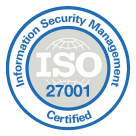Your “fully integrated” contact center just became the most expensive way to frustrate agents and lose customers.
Anyone can connect software systems. But not everyone can create integrations that teams actually want to use.
The difference between success and failure? Companies that win apply the 3 C’s framework: Communication, Consistency, and Customer Experience, increasing their productivity by 20%¹.
In this guide, you’ll learn the exact 3 C’s framework successful businesses use to implement contact center integration, the must-have integrations for 2025 and how to avoid costly disasters
Let’s get started.
Key takeaways
-
Strategic integrations can reduce missed calls from 80% to 16% while boosting team productivity by 20%.
-
The three C’s of contact centers (Communication, Consistency, Customer Experience) are amplified through strategic integration.
-
CRM integration remains the most critical connection, directly impacting sales pipeline and customer retention.
-
Choosing the right integration provider requires evaluating technical capabilities, scalability, and industry expertise.
-
2025‘s must-have integrations include AI-powered analytics and workforce management tools.
Stop working with disconnected systems. See how seamless integration transforms your contact center.
What Is Contact Center Integration?
Contact center integration connects your call center software with external business systems to create a unified communication ecosystem.
Instead of isolated tools, integrated platforms share real-time data, automate repetitive tasks, and provide agents with complete customer context during every interaction.
Contact center integration transforms reactive customer service into proactive experience management. When your platform connects with CRMs, helpdesks, and analytics tools, customer information flows automatically between systems.
Modern virtual call center software works through APIs that enable secure data exchange, offering both pre-built connectors for popular tools and custom development for unique business requirements.
Ultimately, it’s eliminating manual data entry and enabling agents to focus on solving problems rather than searching for information.
Still relying on outdated tools? It’s time to upgrade your customer experience.
What Are the Benefits of Contact Center Integration?
Implementing a fully integrated contact center delivers visible benefits across three critical business dimensions: customer experience, operational efficiency, and strategic decision-making.
Here’s how integrated systems transform contact center performance:
Enhance Customer Experience
-
Personalize interactions: Provide agents with complete customer context before calls connect, including purchase history, previous interactions, and preferences. This 360-degree view enables personalized conversations that build trust and satisfaction.
-
Boost issue resolution: Allow agents to access integrated customer data, so they can resolve issues more efficiently than those dealing with disconnected systems. This improved efficiency directly impacts first-call resolution rates, reducing customer effort and increasing loyalty.
-
Improve first contact resolution (FCR): Offer agents complete interaction histories and relevant knowledge base articles, enabling them to resolve more issues during the initial contact. Companies report major improvements in FCR rates after implementing integrations.
-
Deliver consistent messaging: Ensure all agents access the same customer information and follow standardized processes, creating consistent experiences regardless of which agent handles the interaction.
Improve Operational Efficiency
-
Eliminate manual tasks: Two-way data synchronization automatically logs calls, updates customer records, and generates reports. This automation significantly reduces manual work, allowing agents to focus on complex customer interactions rather than administrative tasks.
-
Alleviate agent stress: When agents don’t need to run multiple applications or search for customer information, job satisfaction improves. Integrated environments reduce cognitive load and enable agents to deliver better service consistently.
-
Improve collaboration: Integrated platforms enable seamless information sharing between departments. Sales teams can see support interactions, while support agents understand the complete customer relationship, leading to more coordinated customer experiences.
-
Reduce costs: Organizations reduce operational costs through improved efficiency, reduced training time, and lower agent turnover. The elimination of duplicate data entry and system switching creates measurable productivity gains.
Unlock Data-Driven Insights
-
Optimize resource allocation: Integrated analytics provide real-time visibility into call volumes, agent performance, and customer satisfaction across all channels, enabling managers to optimize staffing and resource allocation.
-
Enhance flexibility: Cloud-based contact center software with robust integration capabilities scales easily as business needs evolve, supporting remote work, seasonal fluctuations, and business growth.
Bonus Benefits
-
Reduce compliance risks: Automated data handling and standardized processes help maintain compliance with regulations like GDPR, HIPAA, and PCI-DSS by ensuring consistent data management practices.
-
Improve agent morale: Beyond reducing stress, when technology works seamlessly, agents experience less frustration and can focus on meaningful customer interactions. Leading to higher job satisfaction and lower turnover rates.
-
Ensure control and visibility: Integrated dashboards provide real-time insights into all customer interactions, enabling proactive management and quick response to emerging issues.
Disconnected tools create disconnected teams. See the power of unified communication.
What Are the Three C’s of Contact Centers, and How Does Integration Help?
The foundation of an efficient contact center rests on three pillars, the three C’s: Communication, Consistency, and Customer Experience.
Integration boosts all three elements for greater success.
Communication
Effective communication in a contact center involves clarity, empathy, active listening, and responsiveness across all channels.
Integration enhances communication by providing agents with a unified view of customer data, allowing them to access relevant information quickly and respond to queries more efficiently.
How Integration Helps:
-
Automatic Call Distribution (ACD): Routes calls to the most appropriate agents based on skills, availability, and customer data.
-
Unified Customer Profiles: Agents see complete interaction histories across all channels before answering calls.
-
Real-time Information Access: Integration with knowledge bases and CRM systems provides instant access to relevant information.
-
Omnichannel Continuity: Customers can switch between phone, email, chat, and social media without losing conversation context.
Consistency
Delivering a consistent customer experience across all channels builds trust and brand reputation.
Integration ensures consistency with one platform for shared info and protocols across channels.
How Integration Helps:
-
Standardized Processes: Unified workflows ensure all agents follow consistent handling procedures.
-
Single Source of Truth: Real-time data synchronization means all agents access identical, up-to-date customer information.
-
Quality Assurance: Automated monitoring and coaching tools ensure service delivery meets established standards consistently.
-
Brand Voice Alignment: Integration with knowledge management systems ensures consistent messaging across all touchpoints.
Customer Experience
A positive customer experience is the ultimate goal of any contact center.
Integration plays a vital role in enhancing customer experience by providing agents with the tools and information they need to resolve issues quickly, personalize interactions, and exceed customer expectations.
How Integration Helps:
-
Predictive Service: Analytics identify customer needs before they become problems, enabling proactive support.
-
Personalized Journeys: Integration creates tailored experiences based on customer preferences, history, and behavior patterns.
-
Effortless Resolution: Streamlined processes and complete information access enable swift, accurate problem-solving.
-
Emotional Intelligence: AI-powered sentiment analysis helps agents adjust their approach to match customer emotions.
In essence, integration acts as a stimulant for the three C’s, enabling contact centers to optimize communication, ensure consistency, and ultimately create a superior customer experience.
Test-drive the platform that turns customer service into a strategic asset.

Must-Have Contact Center Integration in 2025
These critical connections transform traditional customer service into strategic customer experience management. That’s why CloudTalk enables businesses to meet modern demands for speed, personalization, and consistency.
Customer Relationship Management (CRM)
CRM integration is key, syncing your communication platform and customer database so every interaction builds a complete customer view.
Key Benefits:
-
Click-to-call functionality directly from customer records
-
Automatic call logging with duration, outcome, and detailed notes
-
Real-time data synchronization across both platforms
-
Campaign integration for power dialer and outbound calling
-
Deal and opportunity tracking linked to phone interactions
Popular Examples: Salesforce, HubSpot, Pipedrive, Zoho CRM, Microsoft Dynamics
Workforce Management
Modern workforce management integration combines AI-powered forecasting with real-time scheduling optimization to ensure optimal agent availability across all channels.
Key Benefits:
-
Predictive call volume forecasting based on historical data and seasonal trends
-
Automated scheduling that considers agent skills, preferences, and availability
-
Real-time adherence monitoring and productivity tracking
-
Performance analytics and agent coaching tools
Knowledge Management
Knowledge management integration provides agents with instant access to relevant information, reducing research time and improving resolution accuracy.
Key Benefits:
-
Context-aware article suggestions based on customer issues
-
Real-time content updates and version control
-
Integration with ticketing systems for automatic knowledge base creation
-
Self-service portal synchronization for consistent information
Social Media
Social media integration consolidates customer interactions from platforms like Facebook, Instagram, and LinkedIn into your central contact center interface.
Key Benefits:
-
Unified inbox for all social media messages and mentions
-
Automated sentiment analysis and priority routing
-
Brand monitoring and social listening capabilities
-
Response templates and approval workflows for public interactions
Messaging Platform
Modern customers expect support through messaging apps like WhatsApp, SMS, and in-app chat. Integration ensures these conversations flow seamlessly with other communication channels.
Key Benefits:
-
Omnichannel conversation threading
-
Automated chatbot handoffs to human agents
-
Rich media support for screenshots and document sharing
-
Message scheduling and bulk communication capabilities
Email Management
Email integration transforms scattered email communications into organized, trackable customer interactions within your contact center platform.
Key Benefits:
-
Automatic email-to-ticket conversion
-
Shared inbox management with assignment rules
-
Email templates and signature management
-
Integration with calendar applications for appointment scheduling
Analytics and Reporting
Advanced analytics integration provides comprehensive insights into customer behavior, agent performance, and operational efficiency across all integrated systems.
Key Benefits:
-
Cross-channel performance dashboards
-
Customer journey mapping and touchpoint analysis
-
Predictive analytics for churn prevention and upselling opportunities
-
Custom reporting with automated delivery schedules
Voice and Video Call
Native voice and video integration ensures high-quality communications with advanced features like call recording, transcription, and quality monitoring.
Key Benefits:
-
HD voice quality with global number provisioning
-
Video calling with screen sharing capabilities
-
Automatic call recording and transcription
-
Real-time call monitoring and coaching tools
Payment Processing
Payment integration enables agents to process transactions securely during customer interactions, reducing friction in sales and support scenarios.
Key Benefits:
-
PCI-compliant payment processing within the contact center interface
-
Automated payment confirmation and receipt generation
-
Integration with billing systems and financial reporting tools
-
Support for multiple payment methods and currencies
AI and Chatbots
AI integration brings intelligent automation to routine inquiries while providing agents with real-time assistance and insights during complex interactions.
Key Benefits:
-
Natural language processing for intent recognition
-
Automated response suggestions based on customer context
-
Sentiment analysis and emotion detection
-
Predictive routing based on customer profile and interaction history
Understanding these integration types helps you to create seamless, efficient customer experiences that drive satisfaction and business growth.
This way, you transform disconnected interactions into comprehensive customer relationships that prepare you for every future engagement.
Empower your team to scale, adapt, and deliver. With tools they actually want to use.
How to Choose the Right Service Provider for Contact Center Integrations
Selecting the ideal integration service provider requires careful evaluation of technical capabilities, business alignment, and long-term strategic vision.
The right partner becomes an extension of your team, providing not just technology but strategic guidance for contact center transformation.
Technical Evaluation Criteria
-
Integration Depth and Breadth: Assess the provider’s catalog of integrations and their ability to create custom connections. Look for providers offering both ready-made solutions for quick deployment and sophisticated API capabilities for unique business requirements.
-
Scalability and Performance: Your integration platform must grow with your business. Evaluate the provider’s ability to handle increasing call volumes, additional agent seats, and expanded functionality without performance degradation.
-
Security and Compliance: Choose providers demonstrating robust security protocols and compliance with industry standards including GDPR, HIPAA, PCI-DSS, and SOC 2 Type II certifications.
-
Real-Time Data Processing: Modern customer experiences demand instant information access. Ensure your provider delivers real-time data synchronization with minimal latency across all integrated systems.
Business Alignment Factors
-
Industry Expertise: Choose providers with demonstrated experience in your industry who understand specific compliance requirements, customer expectations, and operational challenges.
-
Support and Training: Comprehensive onboarding, ongoing support, and agent training programs are essential for successful integration adoption. Look for providers offering 24/7 technical support and dedicated customer success management.
-
Total Cost of Ownership: Beyond initial licensing costs, consider implementation fees, customization charges, ongoing maintenance, and potential scalability expenses. Request detailed TCO analyses for realistic budget planning.
-
Innovation Roadmap: Technology evolves rapidly, and your provider should demonstrate commitment to ongoing innovation. Ask about development roadmaps, particularly regarding AI capabilities, emerging communication channels, and advanced analytics.
Key Questions for Service Providers
Technical Capabilities:
-
What pre-built integrations do you offer for our specific technology stack?
-
How do you handle real-time data synchronization across multiple systems?
-
What are your API rate limits and performance guarantees?
-
How do you ensure data security and regulatory compliance?
Implementation and Support:
-
What is your typical implementation timeline for similar projects?
-
What training and change management support do you provide?
-
How do you handle system updates and maintenance?
-
What are your support response times and escalation procedures?
Strategic Partnership:
-
How do you stay current with emerging technologies and industry trends?
-
What is your product development roadmap for the next 2-3 years?
-
How do you measure and report integration success?
-
What ongoing optimization services do you offer?
When evaluating multichannel contact center solutions, prioritize providers offering comprehensive integration ecosystems that can adapt to your evolving business needs while maintaining the contact center software features essential for your operations.
Why Integration is Your Best Investment in 2025
After exploring how modern contact center integration reshapes customer engagement, one thing becomes clear: relying on fragmented systems in 2025 is actively costing your business in agent productivity, customer satisfaction, and revenue opportunities.
Legacy setups once served a purpose, but continuing to operate without robust integration is like managing customer relationships with a Rolodex in the era of real-time personalization and AI insights.
You have three choices:
-
01
Keep working with disconnected platforms that slow down your agents and frustrate your customers.
-
02
Go with a simple solution that appears budget-friendly, but lacks the integrations and insights you need to scale effectively.
-
03
Choose CloudTalk, offering 100+ powerful integrations, real-time synchronization across tools, and a seamless customer experience that drives measurable growth.
The time to unify your contact center tools is now, because customer expectations won’t wait.

Your agents deserve better tools and your customers expect better service.














